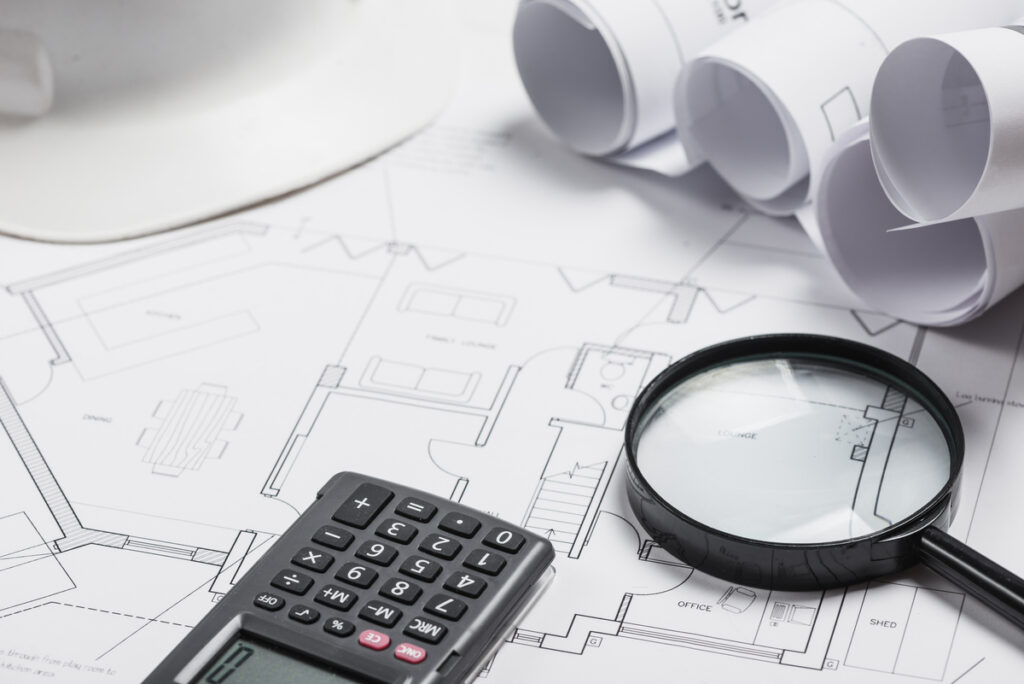In the ever-evolving landscape of construction, understanding the dynamics of Return on Investment (ROI) is pivotal for success. As the industry witnesses transformative shifts driven by technological advancements, changing market conditions, and evolving regulatory landscapes, the ability to measure and evaluate ROI accurately becomes increasingly crucial. According to recent statistics, the global construction industry is projected to reach a staggering value of $12.9 trillion by 2024, highlighting the immense scale and potential of construction endeavors worldwide.
Within this vast and dynamic industry, ROI in construction serves as a compass, guiding stakeholders through the complexities of project planning, execution, and evaluation. It encompasses not only financial metrics but also factors such as project duration, market trends, risk management, and technological innovation. For construction companies and investors alike, the ability to assess the efficiency and profitability of investments is essential for making informed decisions and maximizing returns.
However, navigating the intricacies of ROI in construction requires a comprehensive understanding of the multifaceted factors influencing project outcomes. From managing construction costs and optimizing resource allocation to mitigating risks and leveraging innovative technologies, stakeholders must employ strategic approaches to enhance ROI and drive sustainable growth.
In this comprehensive guide, we delve into the intricacies of ROI in construction, exploring key concepts, best practices, and emerging trends shaping the industry. Through insightful analysis and practical insights, we aim to equip construction professionals with the knowledge and tools necessary to optimize ROI, mitigate risks, and achieve long-term success in an increasingly competitive market.
Table of Contents
Understanding ROI in Construction
Understanding ROI (Return on Investment) in construction is fundamental for project success and profitability. ROI is a critical financial metric used to evaluate the efficiency and profitability of investments made in construction projects. It measures the ratio between the net profit generated from a project and the initial investment required to undertake it.
In the context of construction, ROI helps stakeholders, including project managers, investors, and developers, assess the viability of a project and make informed decisions. Here’s a deeper look at understanding ROI in construction:
- Definition of ROI: ROI is a financial metric that calculates the ratio of net profit to the initial investment. In construction, the net profit includes revenue generated from the project minus all associated costs, including materials, labor, equipment, overhead, and other expenses. The initial investment typically comprises costs related to land acquisition, permits, design, construction, and financing.
- Significance in Construction: ROI is crucial in construction for several reasons:
- It helps stakeholders determine whether a project is financially viable and worth pursuing.
- It assists in comparing different projects or investment opportunities to prioritize and allocate resources effectively.
- It enables project managers to evaluate the performance and success of completed projects, identifying areas for improvement in future endeavors.
- It provides investors and financiers with insights into the potential return and risk associated with investing in construction projects.
- Calculation of ROI: The formula for calculating ROI in construction is:
ROI=(Net Profit/Initial Investment)×100%
Net profit is the revenue generated minus all project costs, while the initial investment includes all expenses incurred to initiate and complete the project.
- Factors Affecting ROI in Construction: Several factors influence ROI in construction projects, including:
- Construction costs: Material prices, labor wages, equipment expenses, and overhead costs significantly impact project expenses.
- Project duration: The longer a project takes to complete, the higher the carrying costs and the lower the overall ROI.
- Market conditions: Economic trends, demand for real estate, and interest rates influence the profitability of construction projects.
- Risk factors: Unforeseen events, such as delays, regulatory changes, and unforeseen site conditions, can affect project costs and timelines, impacting ROI.
- Importance of Accurate Cost Estimation: Accurate cost estimation is crucial for calculating ROI accurately. Project managers must conduct thorough cost assessments at each stage of the project, considering all potential expenses and risks. Using historical data, industry benchmarks, and expert knowledge can help improve the accuracy of cost estimates and enhance ROI predictions.
Understanding ROI in construction is essential for evaluating the financial viability and profitability of projects. By accurately calculating ROI and considering various factors influencing project performance, stakeholders can make informed decisions, optimize resource allocation, and maximize returns on investments in the construction industry.

Factors Influencing ROI in Construction
Several factors influence ROI (Return on Investment) in construction projects. Understanding and managing these factors are crucial for ensuring the profitability and success of construction endeavors. Here are some key factors that significantly impact ROI in construction:
- Construction Costs: The cost of materials, labor, equipment, and other resources required for construction is a primary determinant of ROI. Fluctuations in material prices, labor wages, and equipment rental rates can affect project expenses. Effective cost management practices, such as value engineering, bulk purchasing, and efficient resource allocation, can help control costs and improve ROI in construction.
- Project Duration: The duration of a construction project directly impacts its ROI. Longer project durations result in increased carrying costs, including financing, overhead, and administrative expenses, which can reduce overall profitability. Delays in project completion can also lead to additional expenses and penalties, further impacting ROI. Efficient project scheduling, effective time management, and proactive risk mitigation strategies are essential for minimizing project duration and maximizing ROI in construction.
- Market Conditions: Economic factors, market trends, and demand for real estate significantly influence ROI in construction. Fluctuations in interest rates, inflation, and economic growth can affect construction financing costs and market demand for properties. Understanding market dynamics and conducting thorough market research is essential for identifying lucrative investment opportunities and maximizing ROI in construction.
- Regulatory and Compliance Requirements: Compliance with regulatory standards, building codes, and environmental regulations is necessary for construction projects. Failure to comply with these requirements can result in costly fines, delays, and legal disputes, adversely affecting ROI in construction. Proactive compliance management, thorough due diligence, and effective risk mitigation strategies are essential for minimizing regulatory risks and ensuring project profitability.
- Risk Factors: Construction projects are inherently risky due to various factors, including unforeseen site conditions, weather-related delays, labor shortages, and supply chain disruptions. Managing these risks effectively is critical for mitigating potential losses and optimizing ROI. Implementing risk management techniques, such as contingency planning, insurance coverage, and contractual risk allocation, can help minimize project risks and enhance ROI in construction.
- Quality of Workmanship: The quality of construction workmanship directly impacts the long-term value and profitability of a project. Poor-quality workmanship can lead to defects, rework, and maintenance issues, increasing lifecycle costs and reducing ROI. Ensuring high standards of construction quality through rigorous quality control measures, skilled labor, and adherence to industry best practices is essential for maximizing ROI in construction.
- Project Financing: The financing structure and terms of construction funding significantly influence ROI. High-interest rates, unfavorable loan terms, and excessive debt can increase financing costs and reduce overall profitability. Exploring alternative financing options, negotiating favorable terms with lenders, and optimizing capital structure is essential for minimizing financing costs and improving ROI in construction.
- Technology and Innovation: Adopting innovative construction technologies and practices can enhance efficiency, productivity, and cost-effectiveness, ultimately improving ROI. Technologies such as Building Information Modeling (BIM), prefabrication, and drone surveys can streamline project workflows, reduce errors, and optimize resource utilization. Embracing technological advancements and investing in skilled labor training can help construction firms stay competitive and maximize ROI in construction.
Various factors influence ROI in construction projects, ranging from construction costs and project duration to market conditions and regulatory compliance. Effectively managing these factors through strategic planning, proactive risk management, and innovative practices is essential for optimizing ROI and ensuring the long-term success of construction endeavors.
Maximizing ROI in Construction Projects
Maximizing ROI (Return on Investment) in construction projects requires careful planning, efficient resource allocation, and proactive risk management. By implementing strategic initiatives and adopting best practices, construction stakeholders can enhance project profitability and achieve higher returns on investment. Here are some key strategies for maximizing ROI in construction projects:
Comprehensive Planning and Feasibility Analysis
Conducting thorough planning and feasibility analysis is essential for identifying profitable investment opportunities and minimizing risks. Assessing project viability, market demand, and financial feasibility early in the planning phase helps avoid costly mistakes and ensures that resources are allocated to high-return projects.
Suggested article to read: Construction Planning; Everything You Need to Know in 2024
Value Engineering and Cost Optimization
Implementing value engineering techniques and cost optimization strategies can help reduce construction costs without compromising quality or safety. Identifying cost-saving opportunities, optimizing material usage, and streamlining construction processes can significantly improve ROI in construction by minimizing expenses and maximizing project efficiency.
Suggested article to read: How To Reduce Construction Cost; 11 Tips
Efficient Project Management
Effective project management is critical for minimizing delays, cost overruns in construction, and rework, which can negatively impact ROI. Utilizing project management tools and software, establishing clear communication channels, and implementing robust scheduling and monitoring systems can enhance project coordination, productivity, and profitability.
Proactive Risk Management
Identifying, assessing, and mitigating project risks is essential for protecting ROI in construction and minimizing potential losses. Developing risk management plans, conducting risk assessments, and implementing contingency measures help anticipate and address potential challenges before they escalate into costly issues.
Strategic Resource Allocation
Optimizing resource allocation, including labor, materials, and equipment, is crucial for maximizing ROI. Balancing resource utilization across different projects, prioritizing high-value activities, and leveraging economies of scale can help maximize project efficiency and profitability.
Adoption of Technology and Innovation
Embracing innovative construction technologies and practices can enhance productivity, quality, and cost-effectiveness, ultimately improving ROI in construction. Implementing Building Information Modeling (BIM) technologies, prefabrication, and advanced construction management software can streamline workflows, reduce waste, and optimize resource utilization.
Suggested article to read: What is Building Technology? Type, Example & Everything You Need to Know in 2024
Quality Assurance and Control
Ensuring high construction quality standards is essential for minimizing defects, rework, and warranty claims, which can erode project profitability. Implementing rigorous quality assurance and control processes, conducting regular inspections, and providing ongoing training to construction teams help maintain quality standards and enhance customer satisfaction, ultimately improving ROI in construction.
Lifecycle Cost Analysis
Considering lifecycle costs, including maintenance, operations, and energy consumption, is crucial for evaluating the long-term profitability of construction projects. Conducting lifecycle cost analysis helps identify cost-saving opportunities and optimize design and construction decisions to minimize ongoing expenses and maximize ROI over the project’s lifespan.
Suggested article to read: Construction Cost Estimating; Ultimate Guide for 2024
Client Relationship Management
Building strong relationships with clients and stakeholders is essential for securing repeat business and referrals, which can contribute to long-term profitability. Providing exceptional customer service, addressing client concerns promptly, and delivering projects on time and within budget help foster trust and loyalty, ultimately enhancing ROI.
Continuous Improvement and Learning
Embracing a culture of continuous improvement and learning is essential for staying competitive and maximizing ROI in the construction industry. Encouraging innovation, fostering collaboration, and investing in employee training and development help drive operational excellence and ensure that construction firms remain adaptable and resilient in a dynamic marketplace.
By implementing these strategies and best practices, construction stakeholders can maximize ROI, optimize project profitability, and achieve long-term success in the construction industry.

Technological Advancements and ROI
Technological advancements play a crucial role in enhancing ROI (Return on Investment) in the construction industry. By leveraging innovative technologies, construction companies can improve efficiency, productivity, safety, and cost-effectiveness, ultimately maximizing project profitability and returns on investment. Here’s how technological advancements contribute to ROI in construction:
- Building Information Modeling (BIM): BIM technology allows construction professionals to create digital representations of buildings and infrastructure, enabling collaborative design, planning, and project coordination. By integrating BIM into construction projects, stakeholders can identify clashes, optimize building systems, and streamline construction workflows, resulting in reduced rework, improved project efficiency, and enhanced ROI in construction.
- Prefabrication and Modular Construction: Prefabrication in construction and modular construction techniques involve assembling building components off-site in controlled factory environments before transporting them to the construction site for installation. These methods help accelerate project schedules, minimize material waste, and improve construction quality, leading to lower costs, faster delivery, and higher ROI in construction.
- Advanced Construction Machinery and Robotics: The adoption of advanced construction robots and machinery, such as drones, autonomous vehicles, and robotic exoskeletons, enhances productivity, safety, and efficiency on construction sites. By automating repetitive tasks, increasing precision, and reducing labor requirements, these technologies optimize resource utilization, mitigate risks, and improve project outcomes, ultimately enhancing ROI in construction.
- Construction Management Software: Construction management software solutions, such as project management, scheduling, and accounting software, provide real-time visibility into project performance, progress, and costs. By streamlining project workflows, facilitating communication and collaboration, and enabling data-driven decision-making, these software solutions improve project efficiency, minimize delays, and maximize ROI in construction.
- Virtual Reality (VR) and Augmented Reality (AR): Virtual Reality in Construction and Augmented Reality technologies enable stakeholders to visualize and experience construction projects in immersive virtual environments. By simulating project designs, conducting virtual walkthroughs, and identifying potential issues before construction begins, VR and AR enhance project planning, coordination, and communication, leading to improved project outcomes and higher ROI.
- Internet of Things (IoT) and Smart Construction: IoT sensors and smart construction technologies allow for real-time monitoring of construction site conditions, equipment performance, and worker safety. By collecting and analyzing data from connected devices, construction companies can optimize resource utilization, prevent equipment downtime, and enhance safety protocols, resulting in improved project efficiency and ROI in construction.
- Sustainable and Green Technologies: The integration of sustainable construction and green technologies, such as renewable energy systems, energy-efficient building materials, and green construction practices, reduces environmental impact and operating costs while enhancing project sustainability and resilience. By implementing green technologies, construction firms can achieve energy savings, qualify for incentives and certifications, and appeal to environmentally conscious clients, ultimately improving ROI.
- Artificial Intelligence (AI) and Machine Learning: AI and machine learning technologies analyze large volumes of data to generate insights, predict outcomes, and optimize decision-making in construction projects. By identifying patterns, detecting anomalies, and optimizing processes, AI in construction enhances project efficiency, reduces risks, and improves project outcomes, leading to higher ROI.
Technological advancements offer numerous opportunities for construction companies to enhance ROI by improving efficiency, productivity, safety, and sustainability across all phases of construction projects. By embracing innovation and leveraging these technologies effectively, construction stakeholders can achieve higher returns on investment, gain a competitive edge, and drive long-term success in the dynamic construction industry.
Suggested article to read: Modular Construction; Everything You Need to Know in 2024
Risk Management and ROI
Risk management plays a critical role in determining the ROI (Return on Investment) of construction projects. By effectively identifying, assessing, and mitigating risks, construction stakeholders can minimize potential losses, protect project profitability, and optimize returns on investment. Here’s how risk management contributes to ROI in construction:
- Identifying Risks: The first step in effective risk management is identifying potential risks that could impact project objectives, timelines, and budgets. Risks in construction projects may include design changes, weather-related delays, labor shortages, material shortages, regulatory changes, and unforeseen site conditions. By conducting thorough risk assessments and involving key stakeholders, construction companies can proactively identify and prioritize risks that may affect ROI in construction.
- Assessing Risks: Once risks are identified, they need to be assessed to determine their likelihood and potential impact on project outcomes. Quantitative and qualitative risk assessment techniques, such as probability analysis, sensitivity analysis, and scenario planning, help construction stakeholders evaluate the magnitude of risks and prioritize risk response strategies. By assessing risks effectively, construction companies can allocate resources efficiently and focus on mitigating high-priority risks that pose the greatest threat to ROI.
- Mitigating Risks: After assessing risks, construction companies develop risk mitigation strategies to reduce the likelihood or impact of adverse events. Risk mitigation strategies may include contingency planning, insurance coverage, contract negotiations, alternative procurement methods, and diversification of suppliers or subcontractors. By implementing proactive risk mitigation measures, construction stakeholders can minimize potential losses, avoid costly disruptions, and protect project profitability, ultimately improving ROI in construction.
- Monitoring and Controlling Risks: Risk management is an ongoing process that requires continuous construction monitoring and control throughout the project lifecycle. Construction companies use risk registers, progress reports, and performance indicators to track the status of identified risks, monitor changes in risk exposure, and implement timely risk responses. By maintaining vigilance and adapting risk management strategies as needed, construction stakeholders can effectively address emerging risks and safeguard project ROI.
- Integration with Project Management: Integrating risk management with project management processes ensures that risk considerations are incorporated into decision-making and planning activities. By embedding risk management practices into project schedules, budgets, and resource allocations, construction companies can proactively address potential risks and optimize project outcomes. Effective communication and collaboration among project teams facilitate the identification, assessment, and mitigation of risks, enhancing overall project performance and ROI.
- Considering Opportunity Risks: In addition to mitigating threats, construction companies should also identify and capitalize on opportunity risks that could enhance project outcomes and ROI. Opportunity risks may include technological advancements, market trends, regulatory incentives, and strategic partnerships that offer potential benefits to the project. By recognizing and leveraging opportunity risks, construction stakeholders can capitalize on favorable conditions and maximize project profitability.
- Learning from Experience: After completing construction projects, it’s essential to conduct post-project reviews and lessons-learned sessions to evaluate the effectiveness of risk management strategies and identify areas for improvement. Analyzing project successes and failures helps construction companies refine their risk management practices, enhance decision-making processes, and build organizational resilience. By learning from experience and continuously improving risk management capabilities, construction stakeholders can better protect project ROI in construction and achieve sustainable growth in the competitive construction industry.
Effective risk management is essential for optimizing ROI in construction projects by identifying, assessing, and mitigating risks that could impact project objectives, timelines, and budgets. By integrating risk management into project management processes, construction stakeholders can proactively address potential threats and capitalize on opportunities, ultimately enhancing project profitability and achieving long-term success.

Measuring and Evaluating ROI in Construction
Measuring and evaluating ROI (Return on Investment) in construction projects is crucial for assessing project performance, identifying areas for improvement, and making informed decisions. By analyzing the financial outcomes relative to the initial investment, construction stakeholders can determine the efficiency and profitability of their projects. Here’s how ROI is measured and evaluated in construction:
1. Define Project Objectives and Metrics: Before measuring ROI, it’s essential to establish clear project objectives and define relevant performance metrics. Project objectives may include achieving a specific profit margin, meeting project deadlines, or delivering quality construction work. Performance metrics may include financial metrics such as net profit, revenue, and costs, as well as non-financial metrics such as project duration, customer satisfaction, and safety records.
2. Calculate ROI: The formula for calculating ROI in construction is:
ROI=(Net Profit/Initial Investment)×100%
- Net Profit: The difference between total revenue generated from the project and total project costs, including direct costs (materials, labor, equipment) and indirect costs (overhead, administrative expenses).
- Initial Investment: The total amount of capital invested in the project, including land acquisition, design fees, construction costs, financing expenses, and other upfront expenditures.
3. Gather Financial Data: Collect accurate and comprehensive financial data related to the construction project, including income statements, balance sheets, cash flow statements, and project cost reports. Ensure that all project costs and revenues are properly accounted for, including direct costs, indirect costs, and any additional expenses incurred during the project lifecycle.
4. Calculate Project Costs: Calculate the total project costs incurred throughout the project lifecycle, including pre-construction costs (design, permits, site preparation), construction costs (materials, labor, equipment), and post-construction costs (commissioning, closeout). Break down costs by category and allocate them to specific project phases or activities to accurately assess cost performance.
5. Determine Revenue Generated: Calculate the total revenue generated from the project, including contract payments, change orders, and any additional income generated from the project. Consider any variations in revenue streams, such as milestone payments or incentive bonuses, and allocate them to the appropriate project phases or activities.
6. Evaluate Project Performance: Compare the calculated ROI against predetermined project objectives and industry benchmarks to evaluate project performance. Assess whether the achieved ROI aligns with initial expectations and whether project objectives were met within the specified timeframe and budget. Analyze any deviations from the planned ROI and identify contributing factors that may have influenced project outcomes.
7. Conduct Sensitivity Analysis: Perform sensitivity analysis to assess the impact of changes in key variables, such as project costs, revenues, and timelines, on ROI. Identify critical factors that significantly influence ROI and evaluate different scenarios to understand potential risks and opportunities for improving project profitability.
8. Identify Areas for Improvement: Based on the evaluation of ROI and project performance, identify areas for improvement and develop actionable strategies to enhance future project outcomes. Consider implementing cost-saving measures, improving project management processes, optimizing resource allocation, and leveraging technological advancements to increase efficiency and profitability.
9. Document Lessons Learned: Document lessons learned from the project evaluation process, including successes, challenges, and best practices. Share insights with project teams, stakeholders, and organizational leaders to facilitate continuous improvement and knowledge sharing within the organization.
10. Iterate and Improve: Use the insights gained from measuring and evaluating ROI to refine project management practices, optimize decision-making processes, and enhance overall project performance. Continuously monitor and evaluate ROI throughout the project lifecycle to track progress, identify emerging trends, and make timely adjustments as needed to maximize project profitability and achieve long-term success.
Measuring and evaluating ROI in construction projects involves calculating the difference between project revenues and costs relative to the initial investment. By assessing project performance against predetermined objectives, conducting sensitivity analysis, and identifying areas for improvement, construction stakeholders can optimize project outcomes, maximize ROI, and drive sustainable growth in the construction industry.
Conclusion
In the realm of construction, understanding and effectively managing ROI (Return on Investment) are paramount for project success and profitability. ROI serves as a vital financial metric, measuring the efficiency and effectiveness of investments made in construction endeavors. By evaluating the ratio between net profit and initial investment, stakeholders gain invaluable insights into project performance and viability.
The significance of ROI in construction cannot be overstated. It enables stakeholders, including project managers, investors, and developers, to make informed decisions and assess the financial feasibility of projects. Whether it’s determining the viability of a new development, comparing investment opportunities, or evaluating completed projects, ROI serves as a guiding metric for strategic decision-making.
A comprehensive understanding of ROI encompasses various factors, including construction costs, project duration, market conditions, regulatory compliance, risk management, and technological advancements. Each of these factors plays a crucial role in shaping project outcomes and ultimately influencing ROI.
Accurate cost estimation, efficient resource allocation, proactive risk management, and leveraging technological advancements are essential strategies for maximizing ROI in construction projects. By implementing these strategies and continuously monitoring project performance, stakeholders can optimize project outcomes, minimize risks, and enhance overall profitability.
Measuring and evaluating ROI involves a systematic process of gathering financial data, calculating project costs and revenues, and comparing actual performance against predetermined objectives. Conducting sensitivity analysis, identifying areas for improvement, and documenting lessons learned further facilitate continuous improvement and knowledge sharing within the organization.
Understanding ROI in construction is imperative for evaluating project performance, identifying areas for improvement, and driving sustainable growth. By effectively managing costs, optimizing resources, and leveraging innovative technologies, construction stakeholders can maximize ROI and achieve long-term success in the dynamic construction industry.
Suggested article for reading:
Preliminaries in Construction; Comprehensive Guide 2024
Cost Overruns in Construction Projects; Guide to 2024
Cash Flow in Construction; Comprehensive Guide 2024
Resources:
Global Data | Builder Trend | Avvir.io | getvergo.com | Constructible | WebFx | Procore
For all the pictures: Freepik



